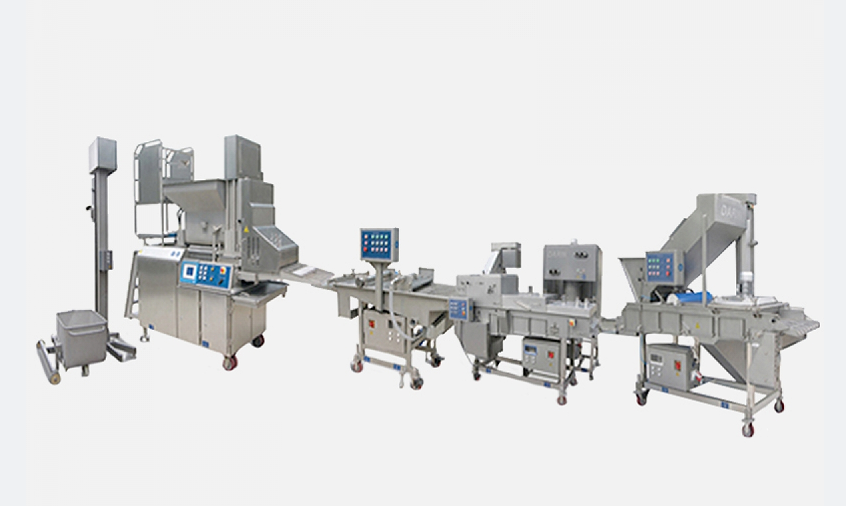The Difference Between French Fries and Potato Chip Production Line
In the modern food industry, French fries and potato chips are popular snacks, and their production lines have significant differences in process design and equipment use. This article will detail the differences between French fries and potato chip production lines to help readers better understand the production processes of these two snacks.

1. Raw material processing stage
French fries production line:
The French fries production line first focuses on the pre-processing of potatoes. The raw potatoes enter the cleaning and peeling machine through the elevator, and the skin is removed using the brush principle. Subsequently, the potatoes enter the picking line, and defective or incompletely peeled potatoes are manually removed. Then, the potatoes are lifted again and entered into the slicer, which cuts out potato strips of uniform specifications. The focus at this stage is to ensure dimensional consistency and surface smoothness of the potato strips for subsequent processing. Check out here for detailed process and machine for French fries production line.
Potato chips production line:
In contrast, the potato chip production line handles raw materials more delicately. The potatoes are first washed and peeled, but then may go directly into a slicer and cut into thin slices rather than strips. The slices are usually thinner to allow for extra crispiness during frying. After slicing, the potato slices need to be rinsed to remove starch and blanched to protect the color to ensure that the potato chips have bright color and good taste. View potato chip machine to learn more.
2. Frying and seasoning stage
French fries production line:
Before frying, French fries usually go through a cooling line and an air-drying line to lower the surface temperature and remove excess moisture, which helps reduce oil splashing during frying and shortens frying time. During the frying process, the temperature and time need to be precisely controlled to ensure that the fries are crispy on the outside and tender on the inside. After frying, the fries are seasoned, such as sprinkled with salt or other seasonings, and then cooled and packaged for sale.
Potato chips production line:
Potato chips go through a similar process before frying, but due to their flake form, frying times are shorter and temperature controls are more stringent. Fully automatic fryers are usually equipped with an automatic temperature control device to ensure a constant oil temperature, thereby improving the consistency and quality of potato chips. After frying, the potato chips will be seasoned immediately with various seasoning methods, including powdering, spraying, etc., to meet the taste needs of different consumers.
3. Equipment differences
Device type:
The French fries production line focuses more on the cutting and even frying of potatoes, so equipment such as strip cutters, cooling lines and drying lines are particularly important. The potato chip production line relies more on the accuracy of the slicing machine and the temperature control capability of the frying machine to ensure the crispy taste of the potato chips.
Degree of automation:
With the advancement of technology, French fries and potato chip production lines have achieved a high level of automation. However, the potato chip production line may rely more on automated equipment in slicing, frying and seasoning to ensure the stability and consistency of product quality.
There are significant differences in ingredient handling, frying and seasoning, and equipment use between French fries and potato chip production lines. These differences stem from differences in form, taste and consumer demand. By understanding these differences, we can better understand the production process of these two snacks and provide a reference for companies to choose appropriate production lines. Whether it is French fries or potato chips, the continuous optimization and innovation of its production lines will promote the development of the food industry and bring more delicious choices to consumers. Visit frenchfriesproductionlines.com for more french fries lines.…

